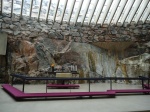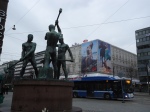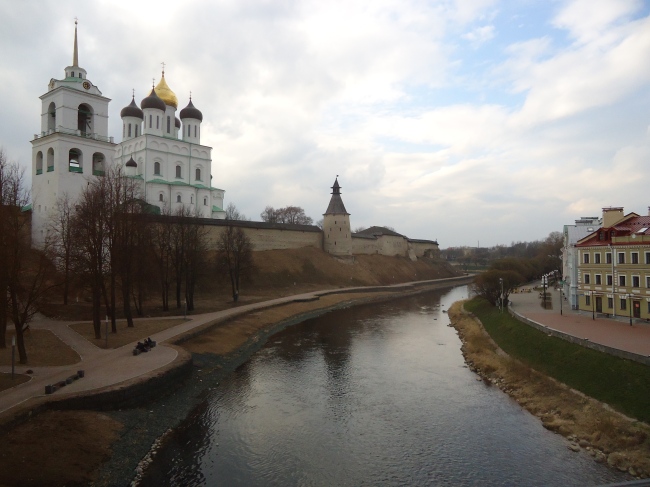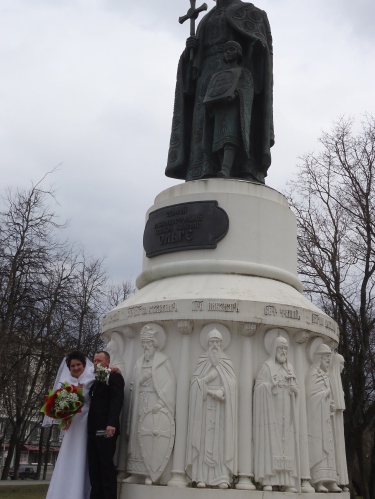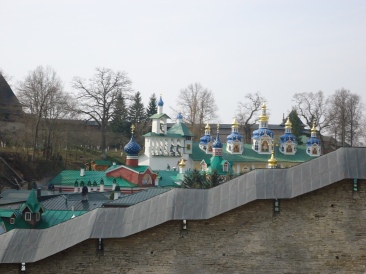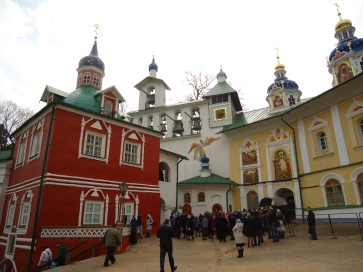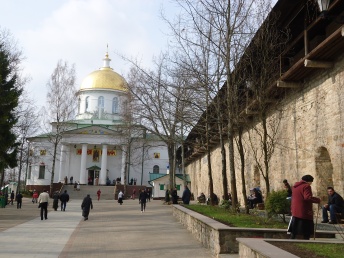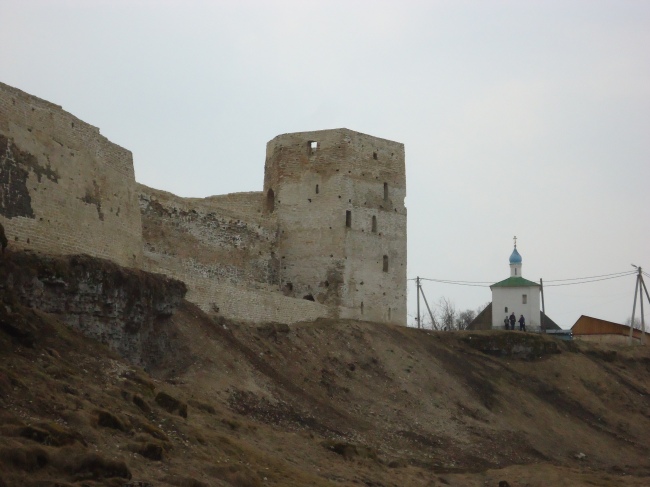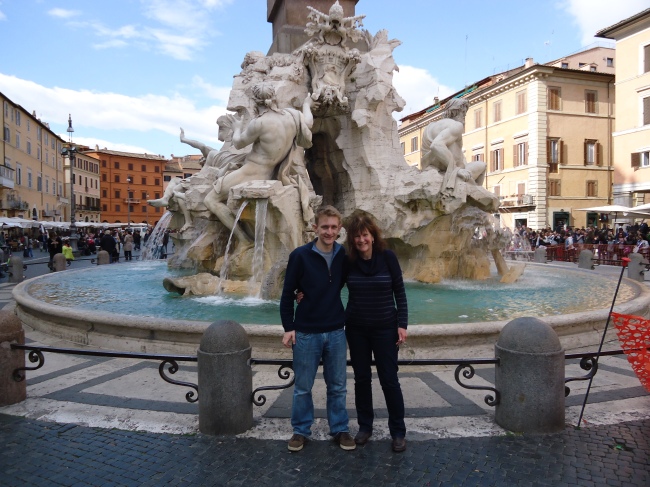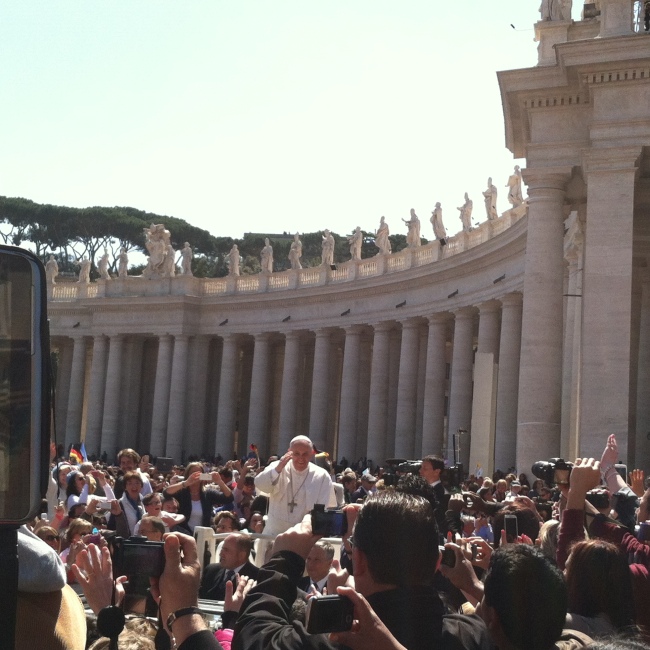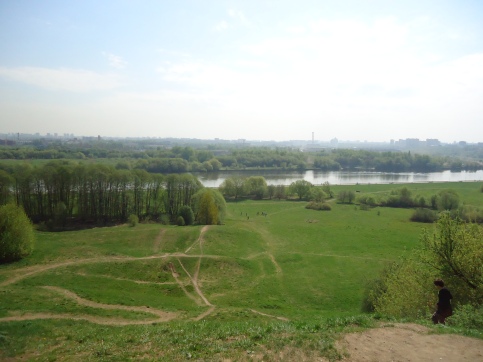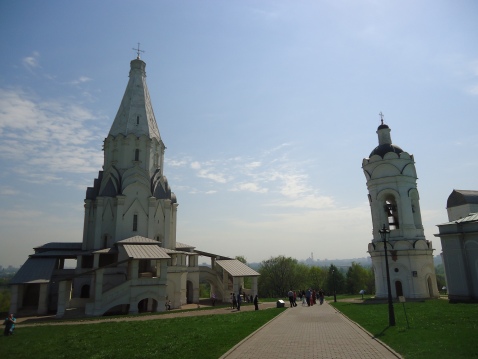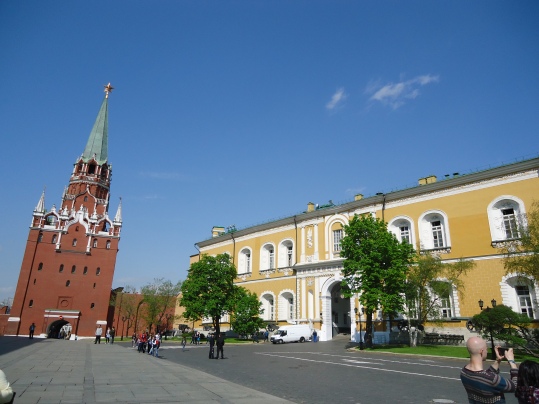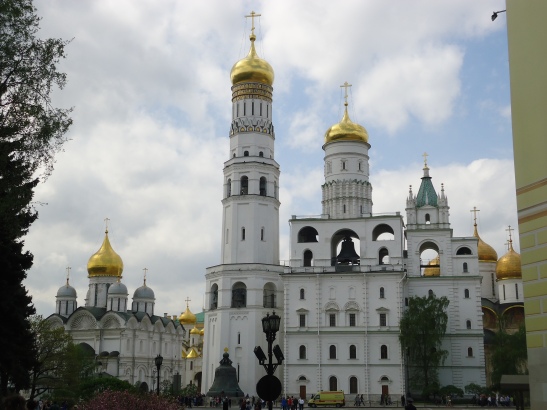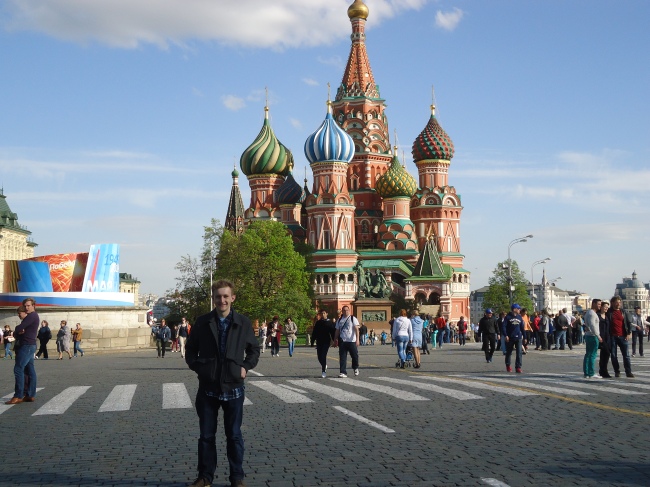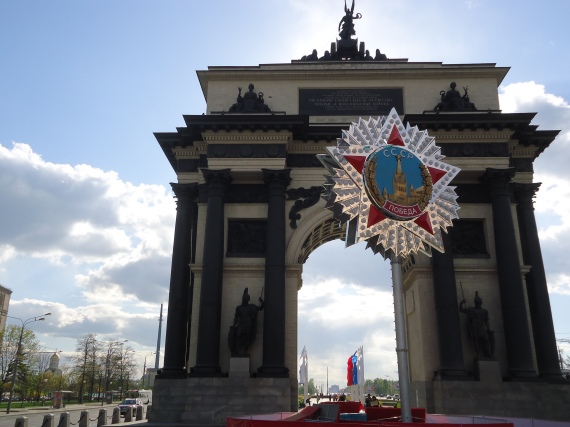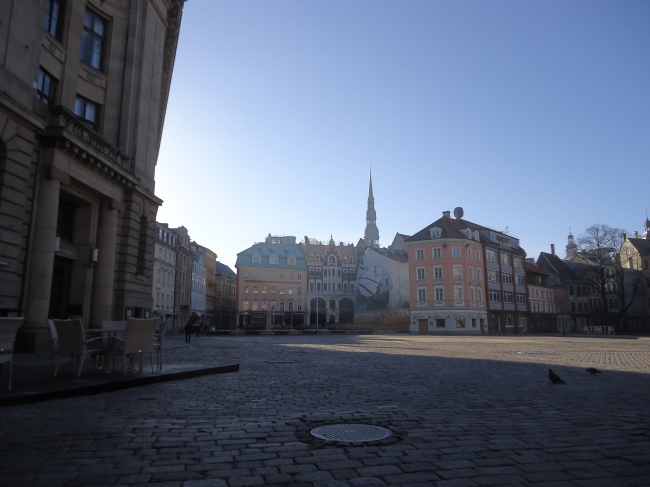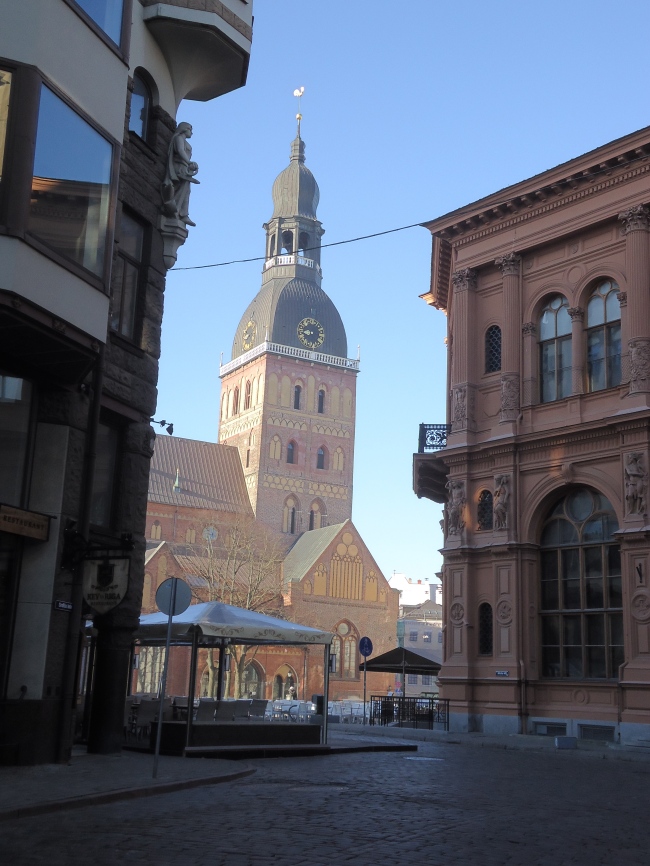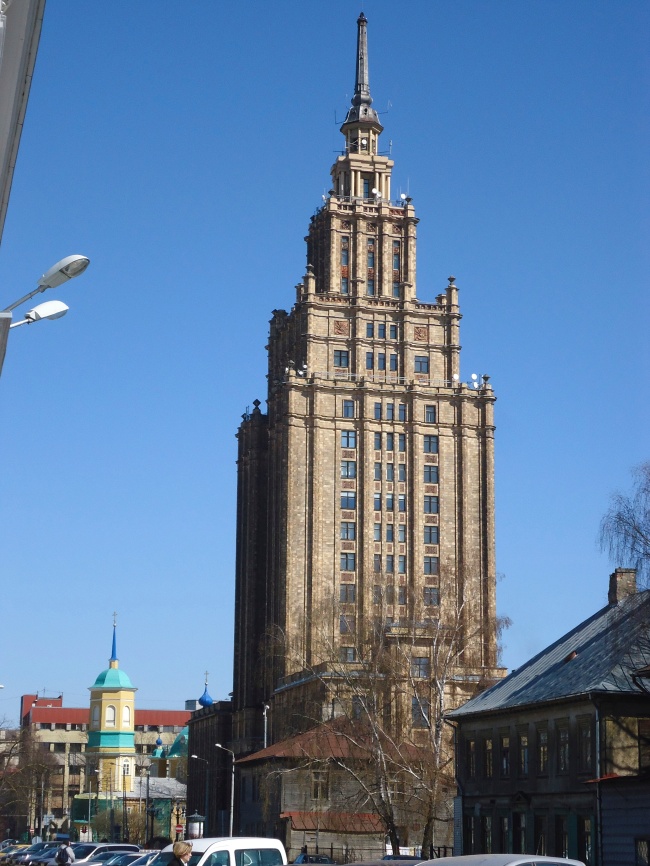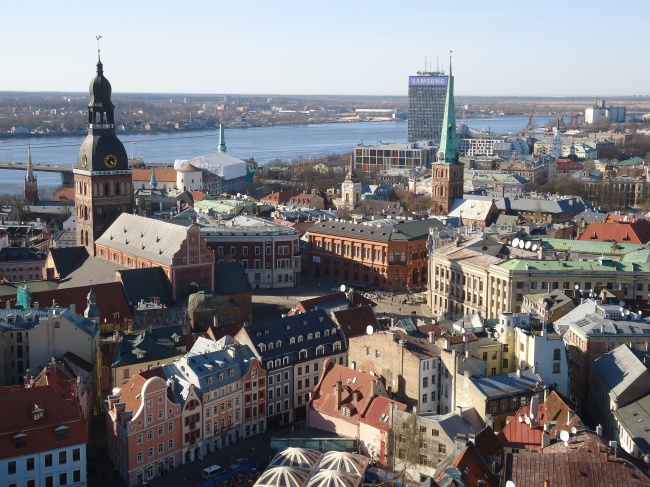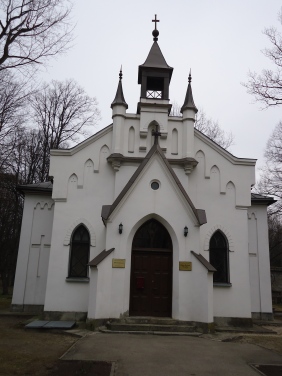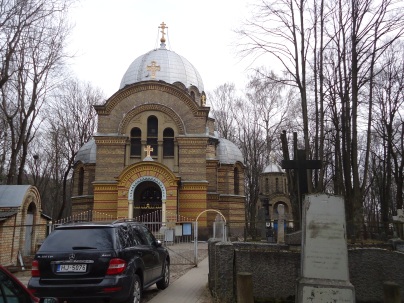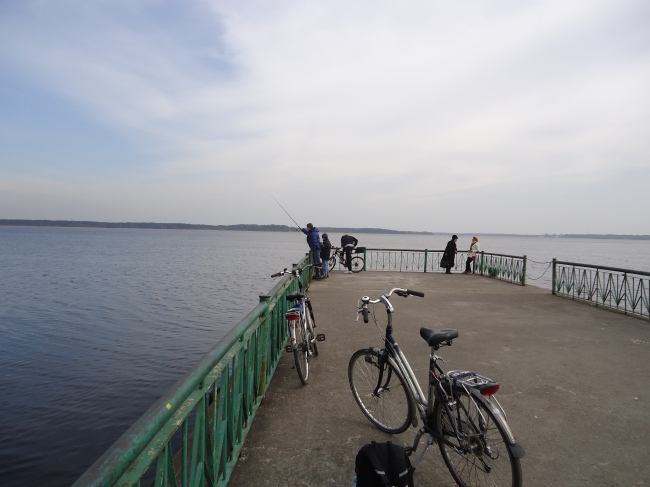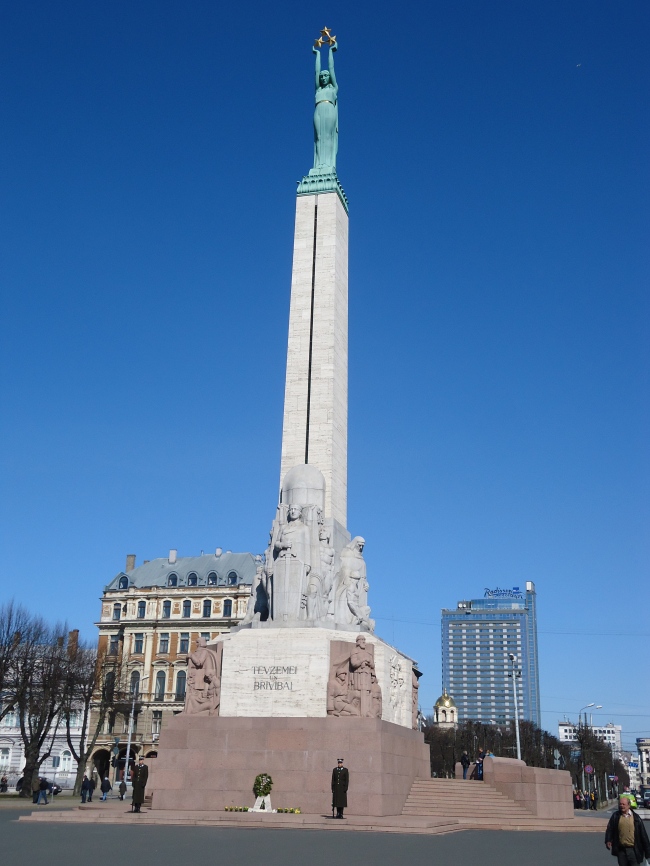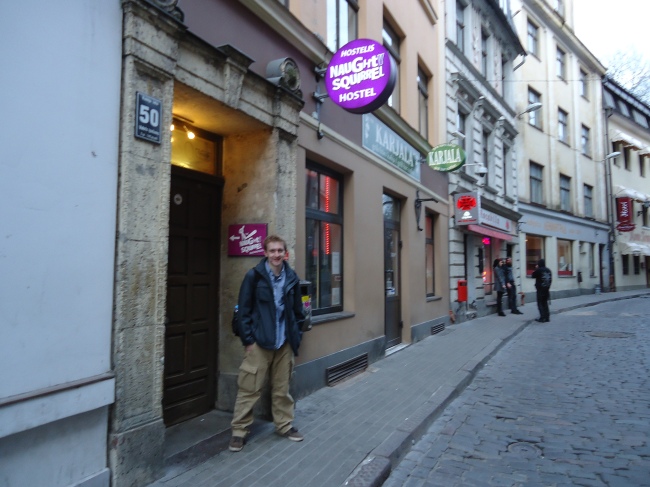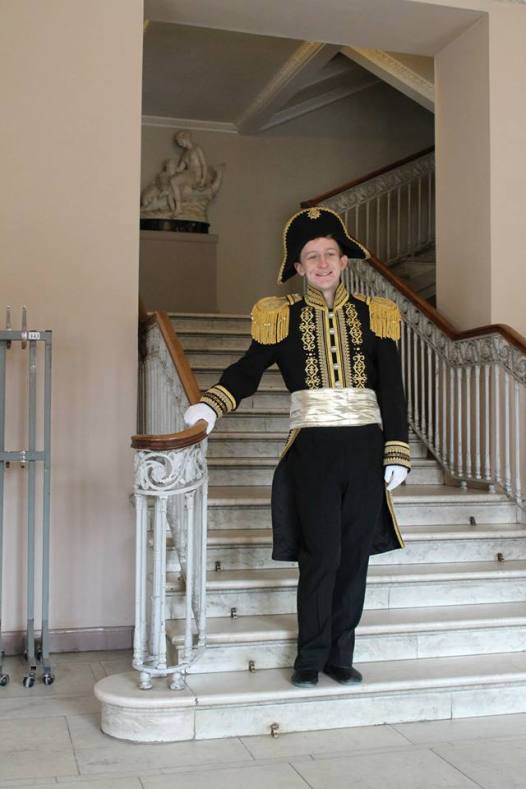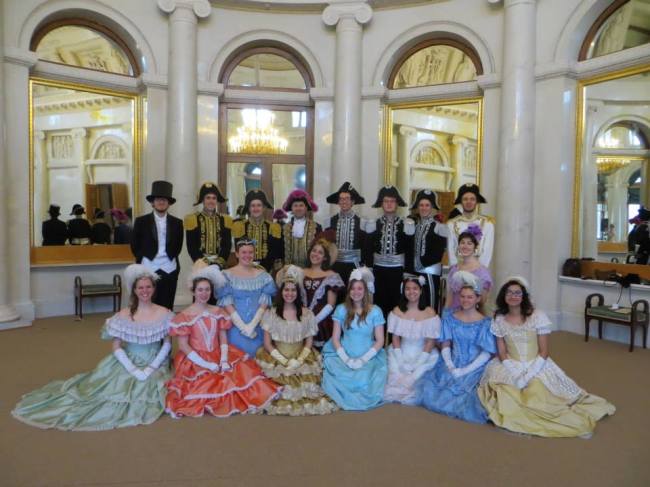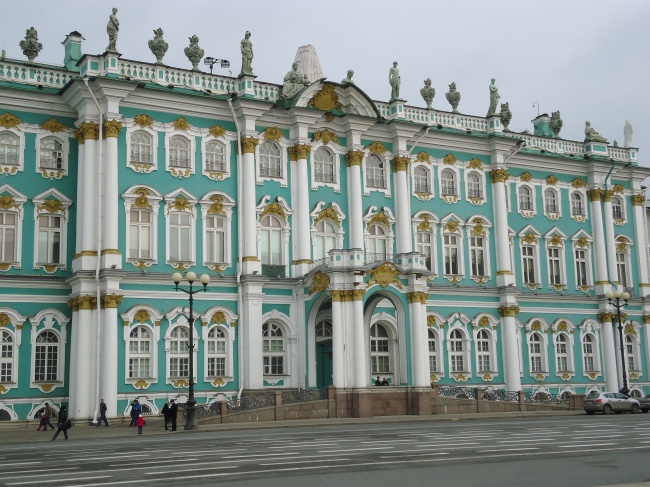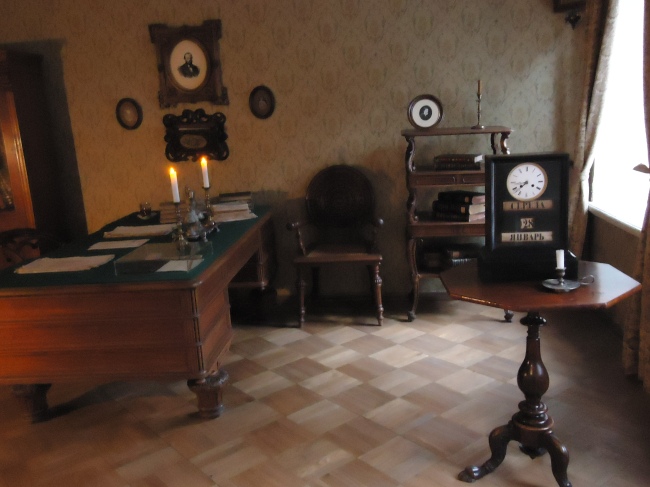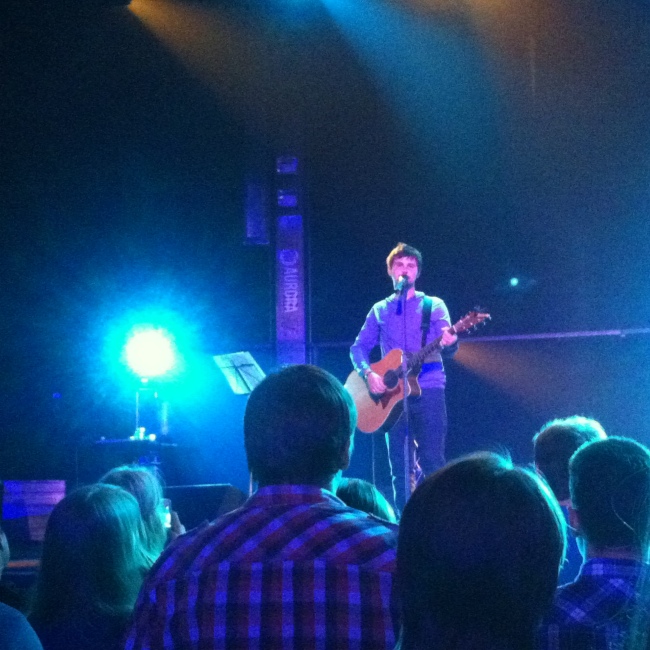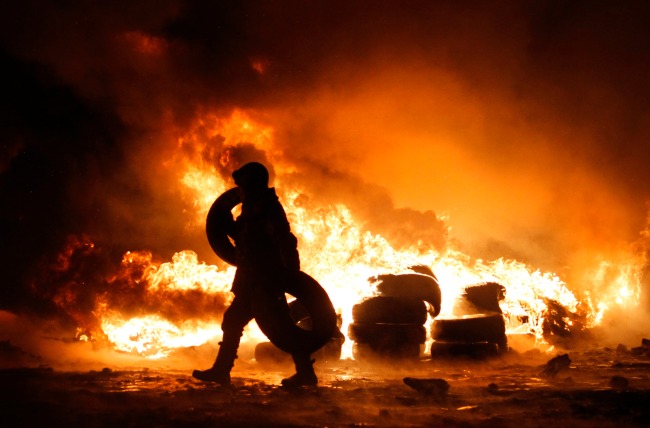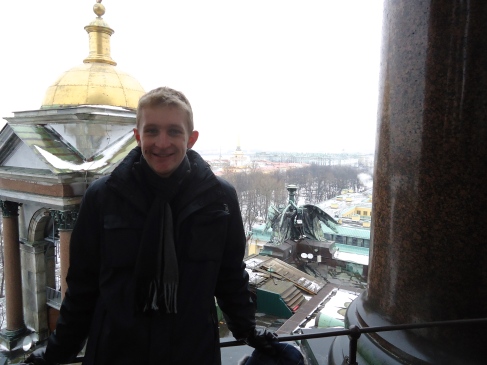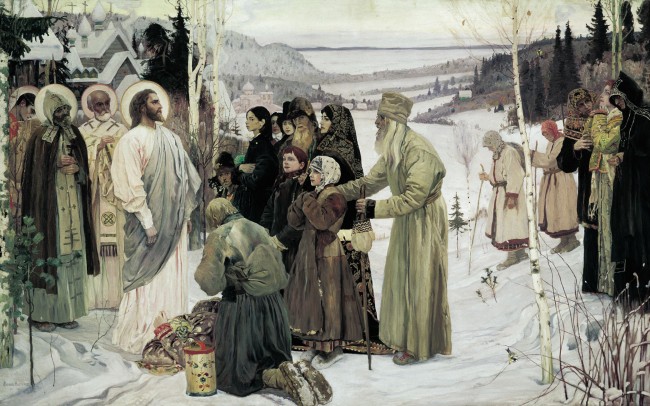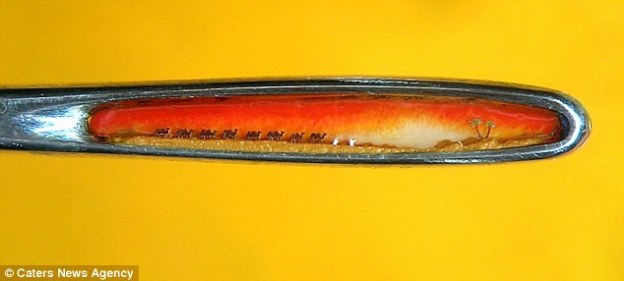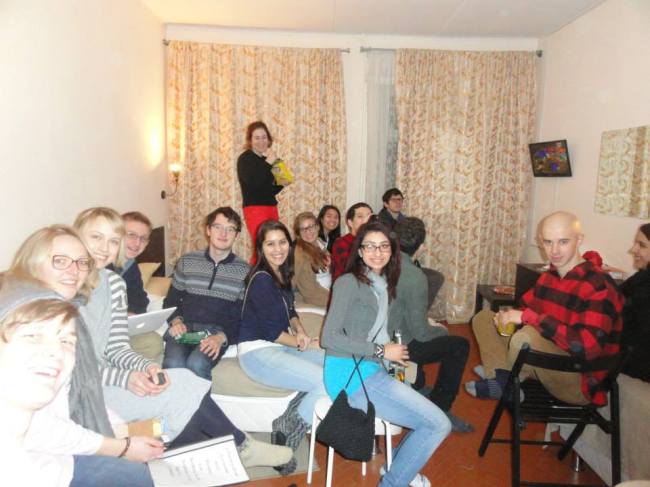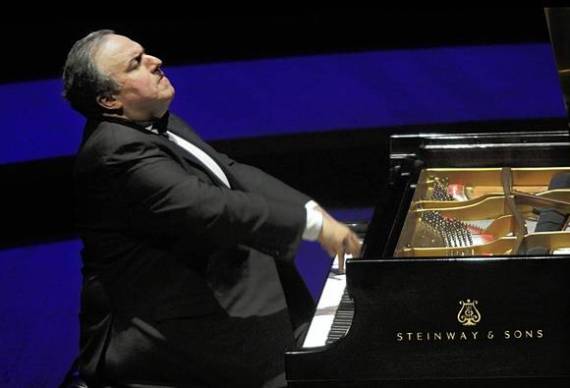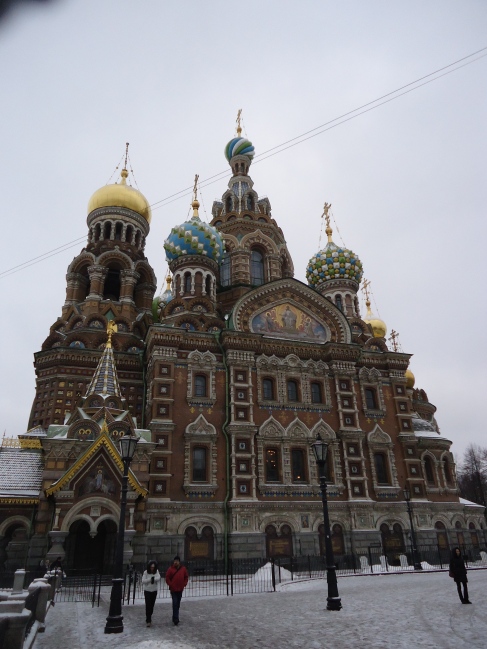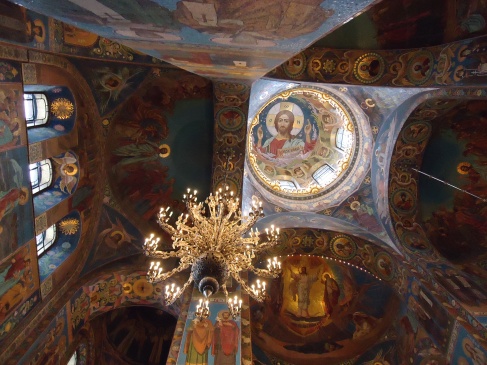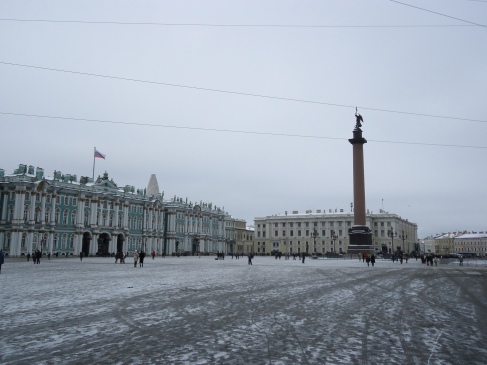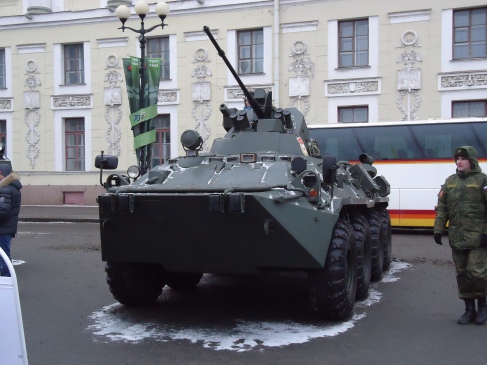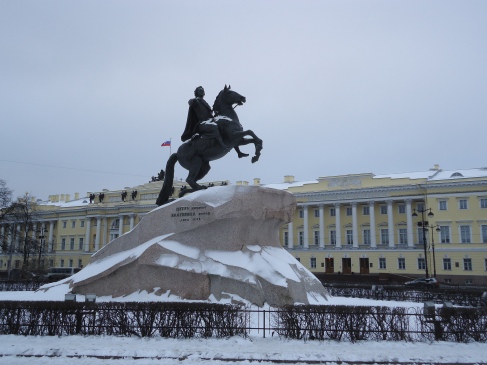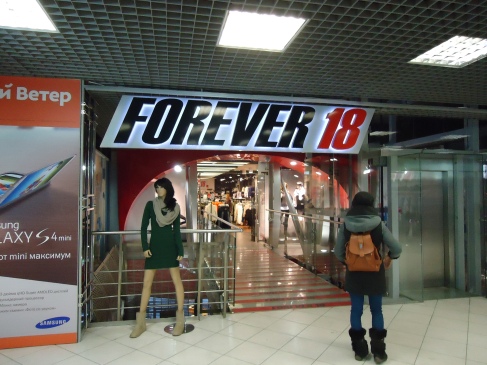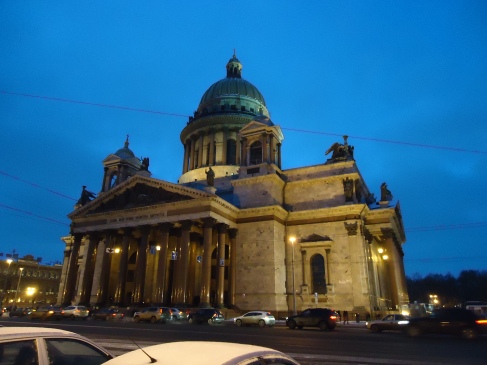On one of my first entries on this blog, just a week after my arrival in St. Petersburg, I wrote that I found myself adjusting to a routine far quicker than I had expected. If that was true of my first few weeks in Russia, it is all the more true upon my return—and it’s especially true on this 4th of July weekend, which marks 4 weeks since my return to America. People talk a lot about reverse culture shock, but for me the real strangeness of returning home lies in how quickly I have re-integrated into my old life. I am happy for that, of course—happy to be back at BC for the summer, happy to be catching up with friends and family, happy to be in an environment where I don’t have to worry about the language barrier. But alongside that thrill of return, there is also a certain melancholy when I think back on my time in Russia, which already seems strangely far away.
I was never as good as about updating this blog as I hoped to be, but I would be remiss if I did not finish off the story of my time abroad. Thankfully, the last month of my semester ended things on a high note—or rather, a series of high notes, for my final weeks abroad allowed me a dizzying assortment of experiences, both inside St. Petersburg and far afield, as I tried to make the most of my remaining time abroad.
Tallinn and Helsinki
I wrote back in April about my impromptu trip to Riga—a city that was not on my agenda before I came to Russia, but which ended up being a highlight of my semester. My experience in Latvia only solidified my desire to visit Tallinn—the capital of Estonia, whose quaint medieval architecture first drew my eye during a presentation in my Russian class two years ago. And while I was at it, I figured, I might as well check out Finland, just north of the Russian border and a short ferry ride from Tallinn. (As for my interest in Finland, I suppose I should thank Monty Python.)
So on the second weekend of May, I headed off on my grand Estonian-Finnish adventure with my friends Adam and Liv. Thanks to a national holiday on May 9th (Victory Day, which is second only to New Year’s in importance to Russians), we were able to make a 3-day weekend of it, arriving in Tallinn late Thursday night, busing back to St. Petersburg on Sunday, and in between spending Saturday in Helsinki, thanks to an early-morning ferry ride from Talinn.
In many of its particulars, Tallinn seemed to rhyme with Riga: both cities have clearly delineated medieval Old Towns, outside of which lie the more modern, “authentic” city. In both Tallinn and Riga, I was struck by how the cities’ European and Soviet heritages mingle. Neither Estonia nor Latvia look fondly upon their history with the USSR, but that history is visible on the streets nonetheless. As I wandered outside Old Tallinn, I found much that would have felt at home in Russia: Soviet-style communal housing, a decrepit, rusty old prison by the sea, and an abandoned, graffiti-strewn shipyard. I don’t mean to suggest that Russia is entirely characterized by industrial decay, but for better or worse such images are linked in my mind with the Soviet legacy, and they stand in stark contrast to the gleaming, modern European infrastructure you see elsewhere in Tallinn.
Of course, the main attraction of Tallinn remains its Old Town, which is home to all the picturesque charms you can imagine: ancient castles, colorful churches, cobblestone streets, and plenty of local vendors dressed in medieval garb, trying to sell you their handiwork or local delicacies. Old Tallinn is very touristy, certainly more so than Riga and, perhaps too much for its own good. Still, I was taken by its old-world charms, and I enjoyed seeing how those styles contrasted with more modern influences—from quirky public sculptures and fountains to somber monuments about Estonia’s time under Soviet rule and its subsequent independence.
After a full day exploring Tallinn and a long dinner at a local pub, Adam, Liv, and I went to bed early at our hostel, then woke up at around 6:30 AM for the next step of our journey: the ferry to Helsinki.
I didn’t spend as much time in Helsinki as I would have liked, but I was generally struck by how eccentric and modern it was. Strange public art and modernist styles, which were only fringe elements against the medieval backdrop of Tallinn, seemed to be dominant in Helsinki.
Take, as an example, the Temppeliaukio Church. From the outside, this place looks like a UFO embedded into a rock face. (Something out of Close Encounters of the Third Kind?) But it is actually a functioning Lutheran Church, built entirely from the rock and drenched in natural night. The place was certainly the most interesting architectural find of the day, but all around in Helsinki I saw interesting modernist spins on familiar architectural staples: train stations, public housing buildings, and even graves, not to mention countless strange sculptures and public art installations. Although modernism is not my favorite artistic mode, I came to appreciate how much of Helsinki’s public space was given over to such experimentation. It lent the city a charm that was distinct from Talinn and certainly unique among all the cities I’ve seen. And apart from all the architectural quirkiness, Helsinki had plenty of natural beauty: from its sea port to the countless parks and green areas sprinkled throughout the city, not to mention a tranquil lake beach where Liv and I caught much-needed naps in the middle of the day.
By the time we returned to Tallinn the next morning (via another 7:30 AM ferry), we were all pretty wiped. While Liv and Adam waited for the afternoon bus, I opted to spend a few hours wandering around the city’s outskirts to take in some final sights. And within a few hours (and after a public transport scare where we thought that our bus wasn’t coming), we were all on board an Ecolines bus back to St. Petersburg.
Liberal Arts/Свободные искусства
When I got back from the Tallinn/Helsinki trip, I became all too aware of my limited remaining time in St. Petersburg. Less than one month stood between me and home, but there was still so much to do: lots of museums to visit and revisit, new neighborhoods to explore, a few more side trips to make, and yes, an academic semester to finish.
I haven’t talked much about my academics in St. Petersburg, but the subject is worth exploring, and more interesting than you might expect. That is in large part thanks to the unique beast that is the Bard-Smolny program, which combines an American-style liberal arts curriculum with full integration into the Russian university system.
The idea of the liberal arts college is becoming passé among many Americans, who unfortunately tend to see universities as degree delivery machines, valuing higher education more for its career-maximizing potential than for its inherent value. I’ve never felt that way, but even so, studying in a liberal arts college in Russia made me appreciate the system more than ever. Smolny College was founded in 1997 in the more liberal spirit of the early post-Soviet period, and has managed to stay afloat even in the more repressive Putin era. Although Russia does not exactly have a sterling reputation for free speech protections, within the walls of Smolny, discourse is as free and open as anywhere else.
I discovered this every Thursday in my political history class called “The Past and Future of Russia in Current Ideological Projects.” The course, a seminar conducted entirely in Russian, was taught by the Petersburg journalist and historian Daniel Kotsubinsky. Kotsubinsky is in many ways the model of a Western-looking St. Petersburg intellectual, the kind of pro-democracy liberal whose voices are largely marginalized in Putin’s Russia. But at Smolny, Kotsubinsky can speak freely—about his own experience in the failed liberal reform movements of the 90s, about his historical research (which often pokes serious holes in the ideological tent poles of Russian nationalism), and about his vision for a future defined by regionalism and separatism, including his hope that St. Petersburg will one day secede from Russia and join the EU!
More importantly, though, Kotsubinsky let us talk and share our views. Beyond that, he brought in a guest speaker every class, each representing a different Russian political ideology, from liberalism to Communism, nationalism to Eurasianism. This kind of back-and-forth between students, professor, and guest speakers is extremely uncommon in Russian universities, where classes are typically taught in a passive lecture style. In Kotsubinsky’s class, that was certainly not the case. With his journalistic penchant for tough questioning, Kotsubinsky often antagonized his guests with his combative interrogation, pointing out logical flaws and contradictions that made discussions quite heated. But he also let everyone have their say—including myself and Beryl, the other American student in a class full of Russians. Kotsubinsky was thrilled to have an American perspective on Russian politics, and he also wanted to know more about American political movements. This led to one of the strangest academic experiences in my life, as Beryl and I did a midterm presentation on the Tea Party movement, trying to explain in broken Russian such matters as the right’s opposition to Obamacare, the government shutdown, and the rise of Ted Cruz.
For my final project, the focus shifted back to Russia, as I was asked to present my own personal idea of what Russia’s future should look like. I proposed a liberal “Second Russian Federation” and constitutional amendments to limit the power of the Russian presidency, which is largely unchecked today. To my surprise, I found Kotsubinsky scrutinizing my ideas as much as any of our guests, asking tough questions about my (admittedly naïve) assumptions and the questions I had left unanswered. It was certainly the most intense oral presentation I have ever delivered, but when I finished it was with an immense sense of satisfaction. I had managed, however imperfectly, to articulate and defend my own political ideas in a foreign language, and under the scrutiny of a seasoned Russian journalist, no less.
I have many other great memories from my courses, but it was Kotsubinsky’s class that will always stay with me when I think back on Smolny. I have taken plenty of classes at BC that opened my mind and expanded my knowledge, but it took this seminar, taught in a classroom 4,000 miles away from home, to make me fully appreciate the power of the liberal arts.
Final Days
One of the final excursions we took as a group was a day trip to Tsarskoye Selo, or Tsar’s Village, located 15 miles outside of St. Petersburg. At this point in the semester I thought I had had my fill of royal palaces, but Tsarskoye Selo proved me wrong. The estate is home to two magnificent palaces, the Catherine Palace (given by Peter the Great to his wife) and the neoclassical Alexander Palace, favored by Nicholas II and the last royal family. These two palaces are placed in a sprawling estate full of huge gardens, ponds, and various other buildings, such as the Imperial Lyceum, the elite school where Pushkin was taught. Most impressive of all was the Amber Room of the Catherine Palace—photography wasn’t allowed there, but a quick Google search will show you how decadent, and beautiful, the room was.
About a week after our trip to Tsarskoye Selo, I had a brush with Russia’s current leadership, in the person of Vladimir Putin himself. For the occasion of the St. Petersburg Economic Forum (boycotted by the U.S. in response to the takeover of Crimea), Putin was in town for the weekend, and he made a surprise appearance at a concert on the steps of St. Isaac’s Cathedral. My host dad was among the 5,000 voices singing in the choir, and he had tipped me off days earlier about Putin’s appearance, so it was no surprise to me. But it was a curiously thrilling spectacle, as an American and a student of international relations, to see Putin in person among a crowd of adoring Russians. For all of the sanctions and international disapproval, Putin has enjoyed career-high approval ratings since his actions in Ukraine, and the mood of the crowd certainly reflected this. It probably helped that the concert itself was dominated by patriotic Soviet-era anthems, including an ode to Sevastopol, which is now de facto Russian territory.
For my part, I was just trying to get a decent picture and then get out of there. I managed to do this, but not before receiving an unwelcome delivery on the head by a bird flying above. I like to think that this unconventional missile was sent by the KGB, trying to weed out the American presence from this musical celebration of Russian nationalism.
The opportunity to see Putin was certainly a highlight of my last month in Russia, but the best was yet to come. My two final nights in St. Petersburg afforded me the best memories of the entire trip, each with a group of people who had made the semester so special: the first night with my fellow Smolny students, and the second with my host family.
On our penultimate night in St. Petersburg, we decided to do something that had always been on our collective bucket list: we stayed up and out all night, experiencing the famous White Nights in all their glory and witnessing the bridges go up around St. Petersburg (which happens twice in the middle of the night to allow ships to pass through the city’s waterways). Joined by a few Russian friends from Smolny, we started out with some celebratory end-of-semester vodka at a dorm and then made our way down Nevsky Prospekt and to a nightclub called Radio Baby. I’ve always been skeptical of nightclubs, but it ended up being a wonderful experience. We started off as a group of Americans awkwardly dancing in our own little bubble, but the circle kept expanding as our friend Will pulled in Russians to dance with us, and we kept the energy going into the wee hours of the night. At around 3 AM I left with some friends to see the bridge go up by the Winter Palace, a sight that was quite impressive in the otherworldly light of the White Nights. Then we headed back to Radio Baby to rendezvous with the rest of the group for some late-night food at a Subway off Nevsky. By the time I headed home, it was past 5 AM and a new day was just beginning, as street-cleaning trucks sweeped the streets and morning light bathed the city. But if it had ever gotten pitch black during the night, I hadn’t noticed—such is the strange ephemeral quality of the White Nights, when day blends imperceptibly into night.
My final night in St. Petersburg was less adventurous but just as special. I spent it as I had spent many nights, at the dinner table in my host family’s apartment. This time, though, we had two extra guests: two musicians from Holland, Ben and Alex, who were friends of my host mother Zhanna and visiting St. Petersburg for a week or two. Since they couldn’t speak any Russian, my language skills got a bit of a work out, as Zhanna and I alternated translation duties for the benefit of Sergey and Masha. Our dinnertime conversation stretched far past midnight as we collectively put away several bottles of champagne and wine. This final dinner was the perfect way to end my adventure abroad, a symbol of how far my language skills had come and of how far I had come personally in becoming comfortable with my Russian family and my temporary home.
What else is there to say about my time abroad? Quite a lot, really, since I have inevitably skipped over huge swaths of my experience. In this whole post, for instance, I have neglected to mention that I took a 5-day trip to Paris at the beginning of June, before spending my last few days in St. Petersburg. In many ways that trip was the ultimate case of déjà vu, as I reconnected with the French host family I stayed with for three weeks in summer 2012, and revisited many of my old Parisian haunts, from the Cinematheque Française to the Luxembourg Gardens. I even reunited with a friend from high school who I hadn’t seen since senior year.
My trip to Paris was a rare and wonderful opportunity to reflect on where I had been in the past two years, and what strange path had led me back to the City of Lights via Russia. There were certainly moments in the past two years when I doubted my decision to study abroad in St. Petersburg, moments where I asked if it wouldn’t be easier to return to Paris instead of facing the more unfamiliar challenges of Russia. But I no longer ask myself that. I am thankful that I was able to have it both ways.
We’ll always have Paris, as the quote from Casablanca goes. Thanks to my semester at Smolny, I’ll always have St. Petersburg, too.








